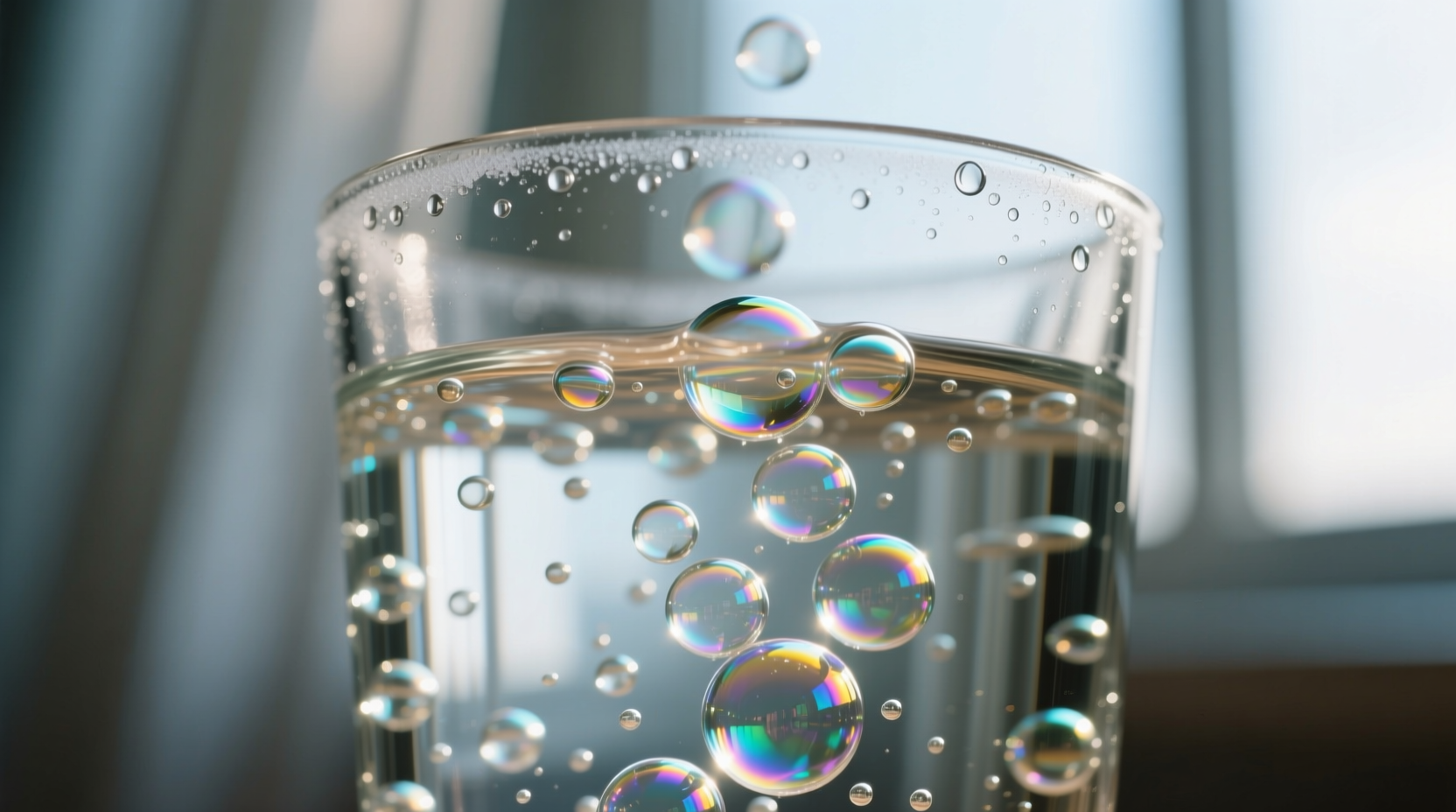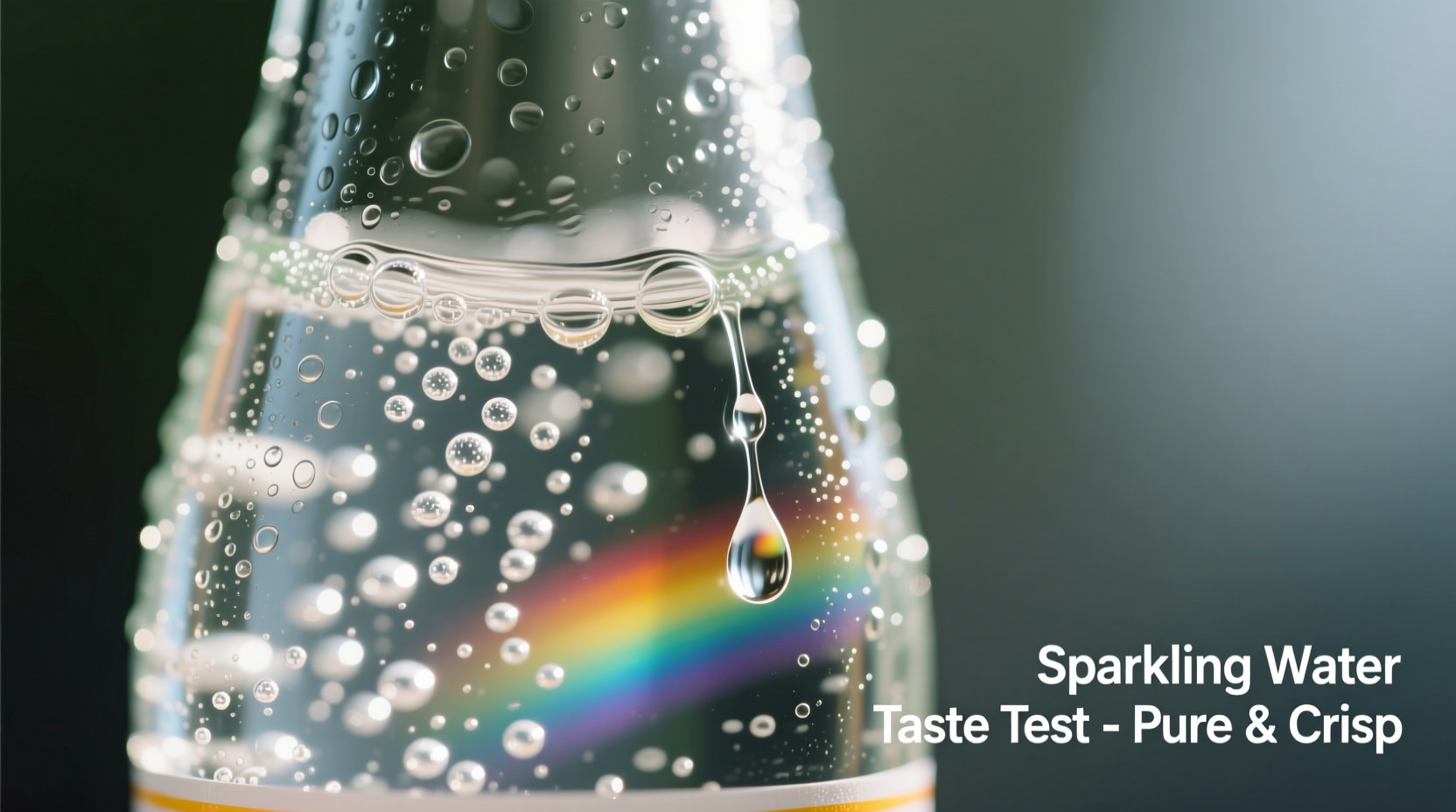The Distinctive Taste Profile of Sparkling Water
When you take your first sip of plain sparkling water, you'll immediately notice a refreshing effervescence that still water lacks. The carbon dioxide bubbles create a gentle tingling sensation across your palate, often described as "prickly" or "zesty." This isn't a flavor per se, but a physical sensation that enhances the drinking experience. The taste itself remains fundamentally water-like—clean and neutral—but with a subtle brightness that many find more stimulating than still water.
Unlike sugary sodas or artificially flavored beverages, quality sparkling water contains no added sweeteners, colors, or preservatives. Its taste comes purely from the carbonation process and any naturally occurring minerals in the source water. This makes it an excellent hydrating alternative for those seeking something more interesting than plain water without the calories of juice or soda.
Why Sparkling Water Tastes Different: The Science Behind Carbonation
The distinctive taste of sparkling water stems from carbon dioxide dissolving in water to form carbonic acid (H2CO3). This weak acid lowers the pH from neutral (7.0 for still water) to approximately 4-5, creating that characteristic crispness. According to research published in the Journal of Food Science, this slight acidity stimulates taste receptors differently than neutral pH water, enhancing our perception of freshness.
| Characteristic | Sparkling Water | Still Water |
|---|---|---|
| pH Level | 4-5 (slightly acidic) | 6.5-7.5 (neutral) |
| Mouthfeel | Tingling, effervescent | Smooth, calm |
| Aftertaste | Clean, refreshing | Neutral |
| Perceived Refreshment | Higher (studies show 30% increase) | Baseline |
How Carbonation Affects Taste Perception
Carbonation doesn't just add bubbles—it actively changes how we experience taste. The carbonic acid triggers mild activation of pain receptors (TRPA1 channels), creating that familiar tingle. This sensation can:
- Enhance perceived freshness by up to 35% according to sensory studies
- Temporarily suppress sweetness perception (which is why sparkling water with lemon tastes less sweet than still water with the same lemon)
- Create a cleansing effect on the palate between food courses
Temperature significantly impacts sparkling water's taste profile. Chilled sparkling water (4-7°C/39-45°F) maintains more carbonation and delivers a crisper taste, while room temperature versions go flat faster and lose their distinctive mouthfeel.
Comparing Different Types of Carbonated Waters
Not all sparkling waters taste the same. The source water and carbonation method create subtle but noticeable differences:
Natural Mineral Sparkling Waters
These come from natural springs where carbonation occurs underground. Examples include Perrier and San Pellegrino. They contain naturally occurring minerals like calcium, magnesium, and sodium that impart subtle flavor notes:
- Calcium-rich: Slightly chalky or earthy notes
- Magnesium-rich: Bitter or metallic hints
- Sodium-rich: Salty or oceanic undertones
Artificially Carbonated Waters
Most store brands add carbon dioxide to purified water. These typically have the cleanest, most neutral taste profile since they lack additional minerals. The bubble size and persistence vary by brand based on carbonation pressure and water filtration methods.
Plain vs. Flavored Sparkling Waters: Taste Differences
Flavored sparkling waters introduce additional taste dimensions while maintaining the signature effervescence:
Naturally Flavored Options
These use real fruit essences or extracts without sweeteners. The carbonation actually enhances fruit flavors by:
- Carrying volatile aroma compounds to your olfactory receptors
- Creating a cooling sensation that complements citrus and berry flavors
- Providing contrast that makes subtle fruit notes more pronounced
Artificially Flavored Options
These often contain sweeteners or artificial flavors that can create an unbalanced taste profile. Many consumers report that artificial flavors taste "chemical" when combined with carbonation, as the bubbles amplify both desirable and undesirable flavor notes.
Historical Timeline of Carbonated Water Consumption
Understanding how our perception of sparkling water has evolved provides context for today's taste preferences:
- 1767: Joseph Priestley first artificially carbonates water, noting its "peculiar satisfaction" to drink
- 1783: Johann Jacob Schweppe develops the first commercial carbonation apparatus, describing the taste as "agreeably pungent"
- Early 1900s: Carbonated water becomes associated with medicinal tonics, creating a slightly bitter perception
- 1970s-1990s: Sparkling water marketed as sophisticated alternative to soda, developing cleaner taste profiles
- 2010s-Present: Explosion of premium sparkling waters with focus on natural mineral profiles and subtle flavors
Contextual Factors That Affect Sparkling Water Taste
Your perception of sparkling water's taste isn't fixed—it varies based on several contextual factors:
Individual Sensitivity Differences
Research from the Monell Chemical Senses Center shows that people vary significantly in their sensitivity to carbonation:
- About 25% of people are "supertasters" who experience stronger tingling sensations
- Those with dental work may perceive more metallic notes
- Age affects sensitivity, with younger people generally perceiving more intense carbonation
Serving Conditions Matter
The same sparkling water can taste different depending on:
- Glassware: Narrow glasses preserve carbonation better than wide bowls
- Temperature: Colder water holds more CO2, creating more intense effervescence
- Food pairings: Fatty foods create contrast that enhances sparkling water's cleansing effect
How to Properly Taste Sparkling Water
To fully appreciate sparkling water's subtle taste profile, follow these professional tasting techniques:
- Chill properly: Serve between 4-7°C (39-45°F) to maximize carbonation retention
- Use the right glass: Tall, narrow glasses minimize surface area and preserve bubbles
- Observe first: Note bubble size (fine bubbles indicate higher quality carbonation)
- Sip slowly: Let the water spread across your tongue to experience the full sensation
- Pay attention to aftertaste: Quality sparkling water leaves a clean, refreshing finish without chemical notes
Common Misconceptions About Sparkling Water Taste
Several myths persist about sparkling water's taste profile:
- "It tastes like soda": Without added sugar or artificial flavors, sparkling water lacks soda's sweetness and complex flavor profiles
- "All sparkling waters taste the same": Mineral content creates distinctive flavor profiles between brands
- "The bubbles make it acidic enough to harm teeth": While slightly acidic, plain sparkling water's pH (4-5) is significantly less erosive than sodas (pH 2.5-3.5) according to the American Dental Association
- "Flavored varieties contain sugar": Many unsweetened flavored sparkling waters use only natural essences without added sweeteners
Consumer Sentiment on Sparkling Water Taste
Recent market research reveals how consumers perceive sparkling water's taste:
- 68% describe it as "more refreshing" than still water (International Food Information Council, 2024)
- 52% prefer it as a soda alternative for its clean taste profile
- Only 18% report any metallic or chemical aftertaste with premium brands
- Flavored varieties see 30% higher satisfaction when made with real fruit extracts versus artificial flavors

Choosing Sparkling Water Based on Taste Preferences
Your ideal sparkling water depends on your specific taste preferences:
- If you prefer subtle effervescence: Look for waters labeled "lightly sparkling" or "medium fizz" with smaller bubbles
- If you want pronounced tingling: Choose highly carbonated waters with visible, persistent bubbles
- If you dislike any mineral notes: Select purified waters with artificial carbonation rather than natural mineral waters
- If you want natural flavor enhancement: Try waters with a touch of real citrus or berry essence without sweeteners
Conclusion: The Refreshing Simplicity of Sparkling Water
At its essence, sparkling water offers a clean, refreshing taste experience defined by its effervescence rather than added flavors. The slight acidity from carbonation creates a bright, lively sensation that many find more stimulating than still water, without the sugar or artificial ingredients of sodas. Whether you prefer plain varieties that showcase subtle mineral notes or naturally flavored options that enhance fruit essences, understanding sparkling water's taste profile helps you select the perfect option for your palate. As consumer preferences continue evolving toward cleaner beverage options, sparkling water's simple yet distinctive taste profile ensures its place as a refreshing staple.
Frequently Asked Questions
Does sparkling water taste exactly like still water with bubbles?
No, sparkling water has a slightly acidic pH (4-5) compared to still water's neutral pH (6.5-7.5), creating a crisp, bright taste sensation. The carbonation forms carbonic acid which stimulates taste receptors differently, making it taste more refreshing than still water.
Why does some sparkling water have a metallic aftertaste?
Metallic notes usually come from higher mineral content, particularly iron or magnesium. Some people are more sensitive to these minerals, especially if they have dental work. Premium sparkling waters undergo additional filtration to minimize these metallic notes while preserving desirable minerals.
Does the temperature affect how sparkling water tastes?
Yes, temperature significantly impacts taste. Chilled sparkling water (4-7°C/39-45°F) maintains more carbonation, delivering a crisper, more intense effervescent sensation. Warmer temperatures cause faster CO2 release, resulting in a flatter taste with less pronounced tingling sensation on the palate.
Can sparkling water taste sweet without added sugar?
Yes, the effervescence can create a perception of slight sweetness through trigeminal nerve stimulation, even in unsweetened varieties. This is why many people describe high-quality sparkling water as having a "clean sweetness" without any added sugars or sweeteners.
Why do some people say sparkling water tastes bitter?
Bitterness perception varies by individual sensitivity. About 25% of people are "supertasters" who experience stronger reactions to carbonation. Higher mineral content (particularly magnesium) can also contribute to bitter notes. The bitterness usually dissipates quickly, leaving a clean aftertaste in quality sparkling waters.











 浙公网安备
33010002000092号
浙公网安备
33010002000092号 浙B2-20120091-4
浙B2-20120091-4